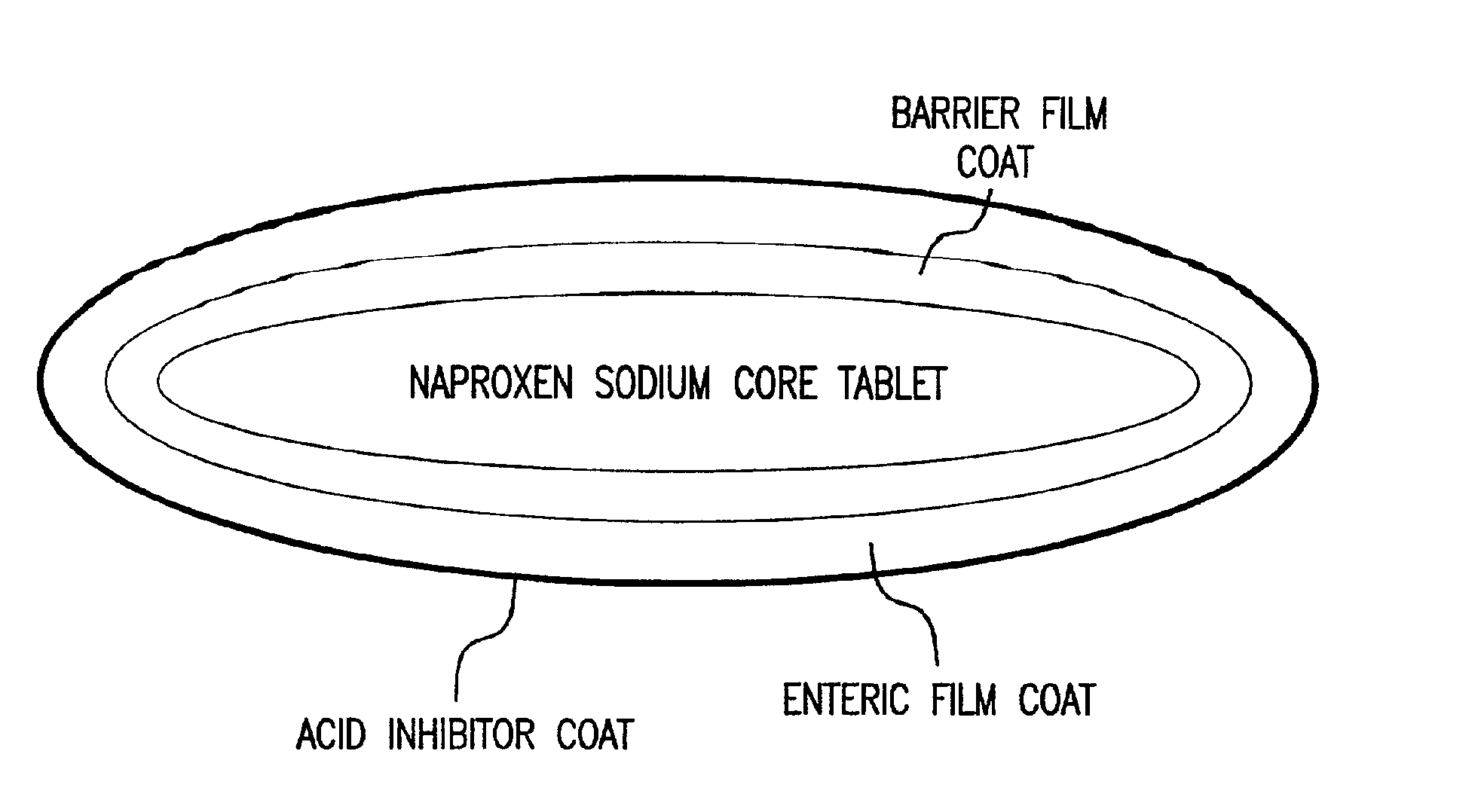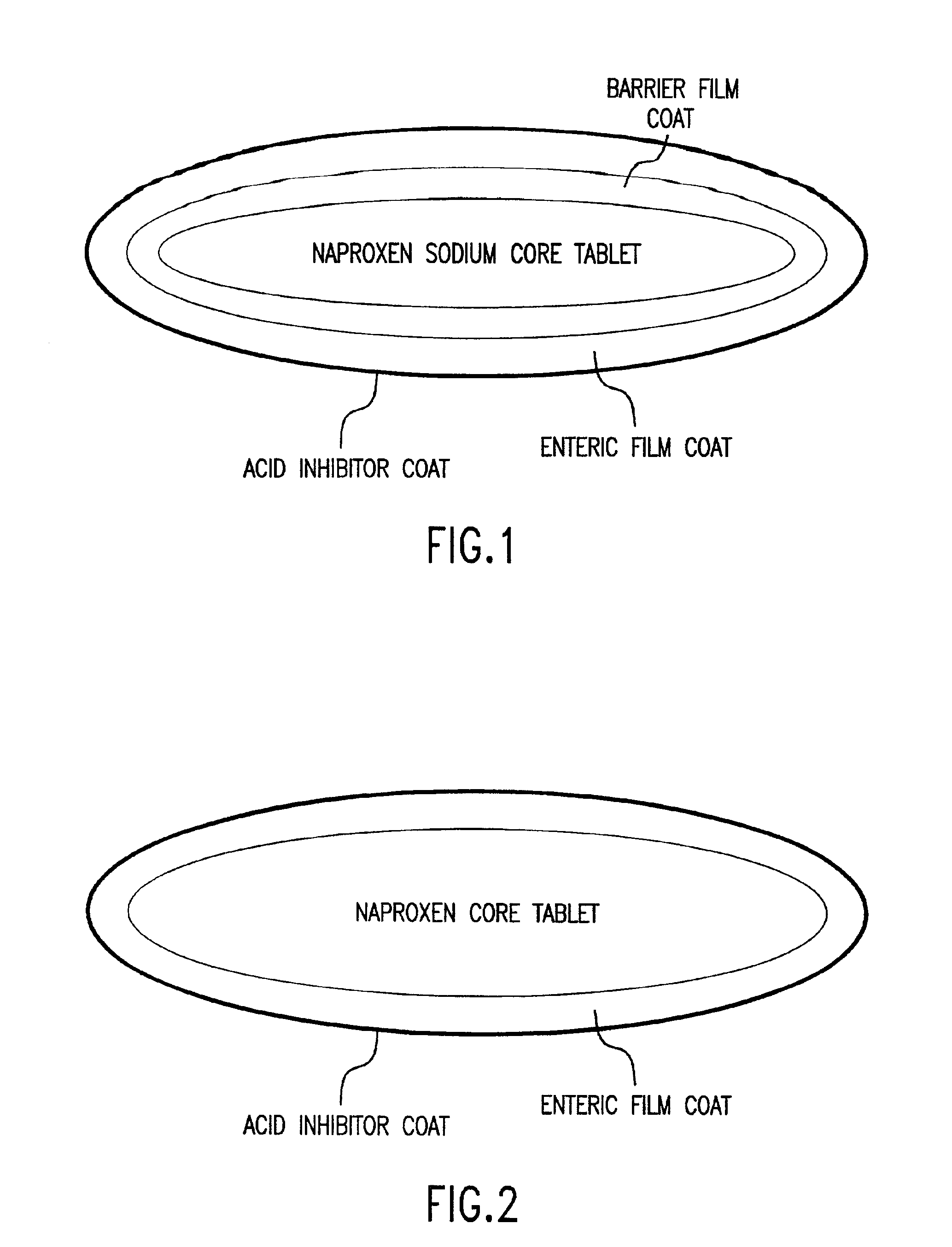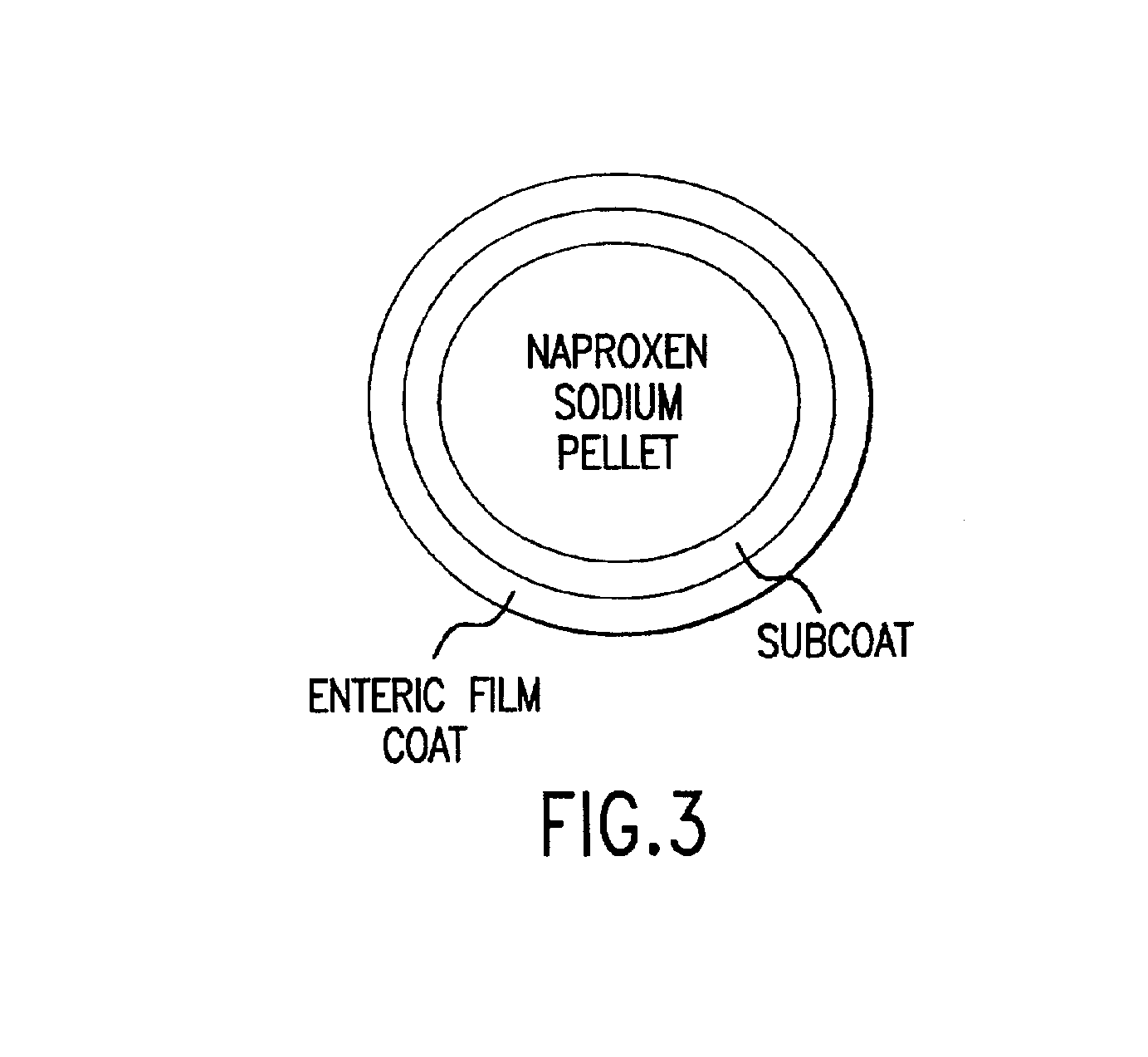Pharmaceutical compositions for the coordinated delivery of NSAIDs
a technology of pharmaceutical compositions and nsaids, applied in the field of pharmaceutical compositions, can solve the problems of affecting the delivery of nsaids, and affecting the delivery of nsaids, and achieve the effect of increasing compliance and reducing the number of individual doses
- Summary
- Abstract
- Description
- Claims
- Application Information
AI Technical Summary
Benefits of technology
Problems solved by technology
Method used
Image
Examples
example 1
Enteric Coated Naproxen Sodium Core and Famotidine Immediate Release
[0048]A schematic diagram of a four layer tablet dosage form is shown in FIG. 1. The first layer contains naproxen sodium distributed throughout a matrix of pharmaceutically acceptable fillers, excipients, binding agents, disintegrants, and lubricants.
[0049]The second layer is a barrier layer which protects the first layer containing naproxen sodium. The barrier film coat is applied by conventional pan coating technology and the weight of the barrier coat may vary from 1% to 3% of the core tablet weight. In particular embodiments, the core naproxen sodium tablet is coated with coating ingredients such as Opaspray® K-1-4210A or Opadry® YS-1-7006 (Colorcon, West Point, Pa.). Polymer film coating ingredients such as hydroxypropylmethylcellulose 2910 and polyethylene glycol 8000 in a coating suspension may also be used.
[0050]The function of the third layer is to prevent the release of naproxen sodium until the dosage fo...
example 2
Enteric Coated Naproxen Core and Famotidine Immediate Release
[0053]FIG. 2 illustrates a three layered dosage form which releases famotidine immediately after ingestion by the patient in order to raise the pH of the gastrointestinal tract to above about 4. The innermost layer contains naproxen uniformly distributed throughout a matrix of pharmaceutically acceptable excipients. These excipients perform specific functions and may serve as binders, disintegrants, or lubricants. A pharmaceutically acceptable enteric coating surrounds the naproxen core. The function of the enteric coat is to delay the release of naproxen until the dosage form reaches an environment where the pH is above about 4. The coating does not dissolve in the harshly acidic pH of the unprotected stomach. It contains methacrylic acid copolymers which prevent the release of naproxen in the unprotected stomach. Also included are: triethyl citrate, a plasticiser; simethicone emulsion, an anti-foaming agent; and sodium h...
example 3
Naproxen Controlled Release Core and Famotidine Immediate Release
[0056]A trilayer tablet which separates famotidine contained in the film coat from controlled-release naproxen may be used in the present invention. The core tablet of naproxen is formulated using excipients which control the drug release for therapeutic relief from pain and inflammation for 24 hours. FIG. 2 shows an example of an appropriate trilayer tablet. In this particular example, naproxen is mixed with a polymeric material, hydroxypropylmethylcellulose and granulated with water. The granules are dried, milled, and blended with a lubricant, such as magnesium stearate. They are then compacted into tablets.
[0057]The controlled-release core tablet of naproxen is film coated with a pharmaceutically acceptable enteric coating. The function of the enteric coat is to delay the release of naproxen until the dosage form reaches an environment where the pH is above about 4. The coating does not dissolve in the extremely ac...
PUM
| Property | Measurement | Unit |
|---|---|---|
| pH | aaaaa | aaaaa |
| half life | aaaaa | aaaaa |
| half life | aaaaa | aaaaa |
Abstract
Description
Claims
Application Information
 Login to View More
Login to View More - R&D
- Intellectual Property
- Life Sciences
- Materials
- Tech Scout
- Unparalleled Data Quality
- Higher Quality Content
- 60% Fewer Hallucinations
Browse by: Latest US Patents, China's latest patents, Technical Efficacy Thesaurus, Application Domain, Technology Topic, Popular Technical Reports.
© 2025 PatSnap. All rights reserved.Legal|Privacy policy|Modern Slavery Act Transparency Statement|Sitemap|About US| Contact US: help@patsnap.com



